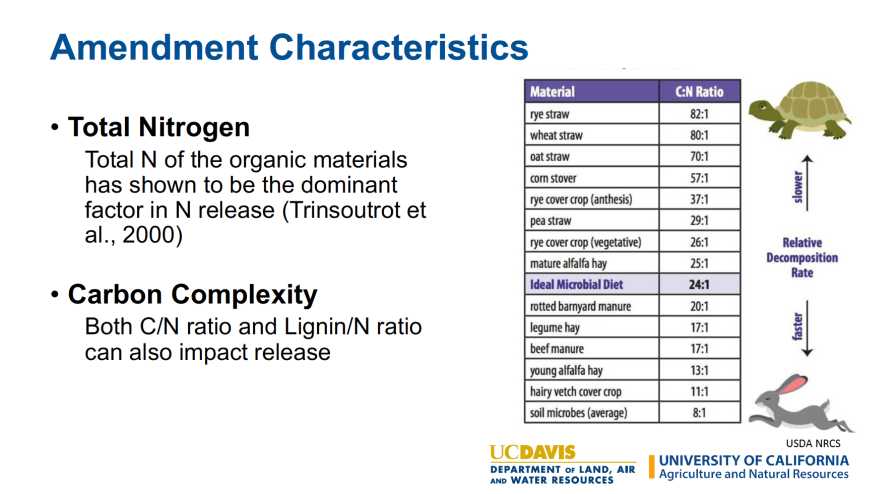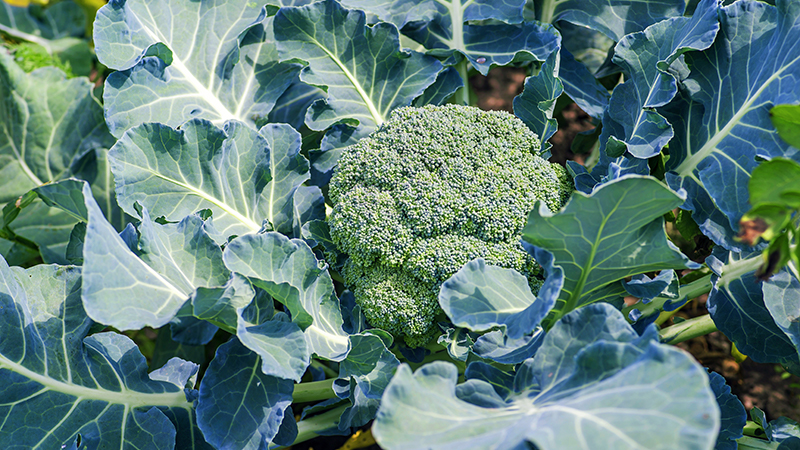Use Organic Fertilizers for the Right Reasons
There is a very good reason organic growers have been using compost for centuries — it works. Seeking to give their crops a boost, many growers additionally employ high-nitrogen organic fertilizers, such as chicken manure, which makes perfect sense as long as they understand the long-term effects.
That is one of the initial conclusions made by Cole Smith, Staff Research Associate, University of California Cooperative Extension, Santa Clara and Monterey Counties, who is in the third year of a project, “Evaluation of Certified Organic Fertilizers for Long-term Nutrient Planning.”
“If you’re using high-N organic fertilizers, it’s not default they are beneficial to soil health,” he says. “We don’t recommend they replace compost, manures, or cover crops. Just because you’re using blood meal or guano doesn’t mean you’re increasing soil health.”
The key here is the term “soil health,” says Smith, who emphasizes that his project is not to measure short-term effects to crops, such as yield, but to assess the long-term impacts.
“High-N fertilizers are really specific for the plant,” he says. “They’re for the crop, not the soil. Not like compost, etc., which influences many factors. High-N organic fertilizer is not a replacement for other soil health practices.”
FEEDING THE SOIL
Smith says it is critical to understand that crop nutrients are stored in soil organic matter, which has a carbon backbone. Microbial biomass carbon, a USDA soil health indicator, generates soil organic matter and forms soil aggregates. To put it simply, building healthy soil requires carbon and high-nitrogen organic fertilizers — much like their conventional counterparts — do not come with a lot of carbon.
“Nutrients in these fertilizers can be lost to the environment in the same way that inorganic fertilizers can,” says Smith. “Lots of times people hear ‘organic,’ and they think it will automatically be good for soil, but it’s more complicated than that.”
Simply put, microbes need a balanced diet, just like any other living thing.

Total nitrogen of organic materials has shown to be the dominant factor in N release, but the Carbon/Nitrogen (C/N) ratio can also impact release.
Graphic courtesy of UC Agriculture and Natural Resources
“High-N fertilizers don’t feed the microbial biomass the same way as a compost or manure would, because they’re not increasing the soil organic matter,” he says. “I’m certainly not saying don’t use them, but from a long-term manage-ment standpoint, they may not be building soil health.”
Smith’s research should be of particular interest to traditional organic growers who go by the maxim that they do not feed their crops, per se, they feed their soils, which in turn nurture their crops.
“If soil health is the management goal, you must use other means, such as compost, cover crops, etc.,” he says. “Just blood or fish meal may not be achieving the same results.”
As far as the rate of N release, the carbon/nitrogen ratio appears to be a dominant control for these high-N amendments. Although there are other important factors, such as temperature and soil type, which have varying effects.
BACK TO THE FOUR Rs
The old axiom about nutrients, that it is critical for growers to keep in mind the four Rs of fertilizer use, definitely applies, Smith says. Supplying needed nutrients for crop production involves attention to four major fertilization factors (the 4Rs): right rate, right source, right placement, and right timing. Attention to these factors will provide adequate nutrition for crop production while minimizing the risk of nutrient loss.
It is also important for growers to keep in mind that, in general, while different crops have different N-use efficiencies, the majority of the N the plant takes up is from the existing soil’s organic matter, not the N you apply.
Smith recommends that growers do a full nutrient budget when evaluating their soils, not just an N budget, which many have traditionally employed. High-N organic fertilizers generally have a lot of phosphorous — a lot more phosphorous than you need, and more than the ecosystem can handle. The problem is not with leaching as it is with N, because phosphorous is not mobile like N. But it increases biological activity in waterways and can impede water quality, as has been seen in the Mississippi River.
“The four Rs don’t just apply to N, they apply to P,” he says.
In summary, Smith says growers need to keep in mind that high-N organic fertilizers are great for feeding crops, but they will not have the staying power of other slower-releasing sources, such as compost, that build the soil microbial biomass.
“What you put down this season may work even for next season,” he says, “but might not have impacts five to 10 years down the road.”









